Does Rural India use toilets? Is India Open Defecation Free? What does the 21st century rural Indian woman think of 'toilets'? We put our ears to the ground and came up with some very interesting stories on this.
In 2013, the United Nations came up with the World Toilet Day — to do away with Open Defecation (OD) across the world. The goal was to spread awareness of sanitation and good hygiene. Most importantly it was the start of the ‘Open Defecation Free’ movement across the world.
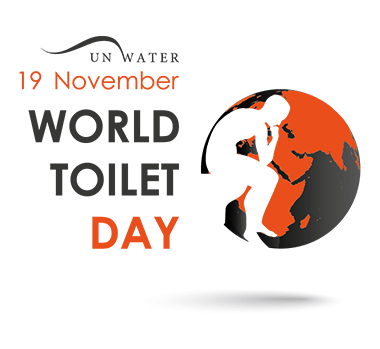
World Toilet Day, Nov 19, is an observatory day of the United Nations
The Swachh Bharat Mission of the Government of India was started in 2014. One of the primary goals of this project was to make India completely OD Free. The first step of the mission is to ensure all households construct a toilet with working water connections. Each household that owns the land, is given INR 12,000 to build their toilet. Where this is not possible, Community Toilets offer a solution.
India caught up more recently with its Swachh Bharat movement, which has taken the country’s cleanliness quotient to a different level. From the 39% of the rural population who did not use toilets in 2017, we have come very close to ODF status across India.
Nonprofits like Hand in Hand India work together with the Government’s goals of ODF villages. By providing awareness and utilising the synergies of Public Private Partnerships, we have created 10 ODF villages across the country.
Putting Our Ears to the Ground
We conducted a study across 25 villages in Tamil Nadu on what toilets mean to the rural women, how are they using Community complexes, and what makes it difficult to build a toilet at home.
A lot of small stories came up in the process, which we like to call Toilet Tales. Before that, here’s a gist of what we got from our study.
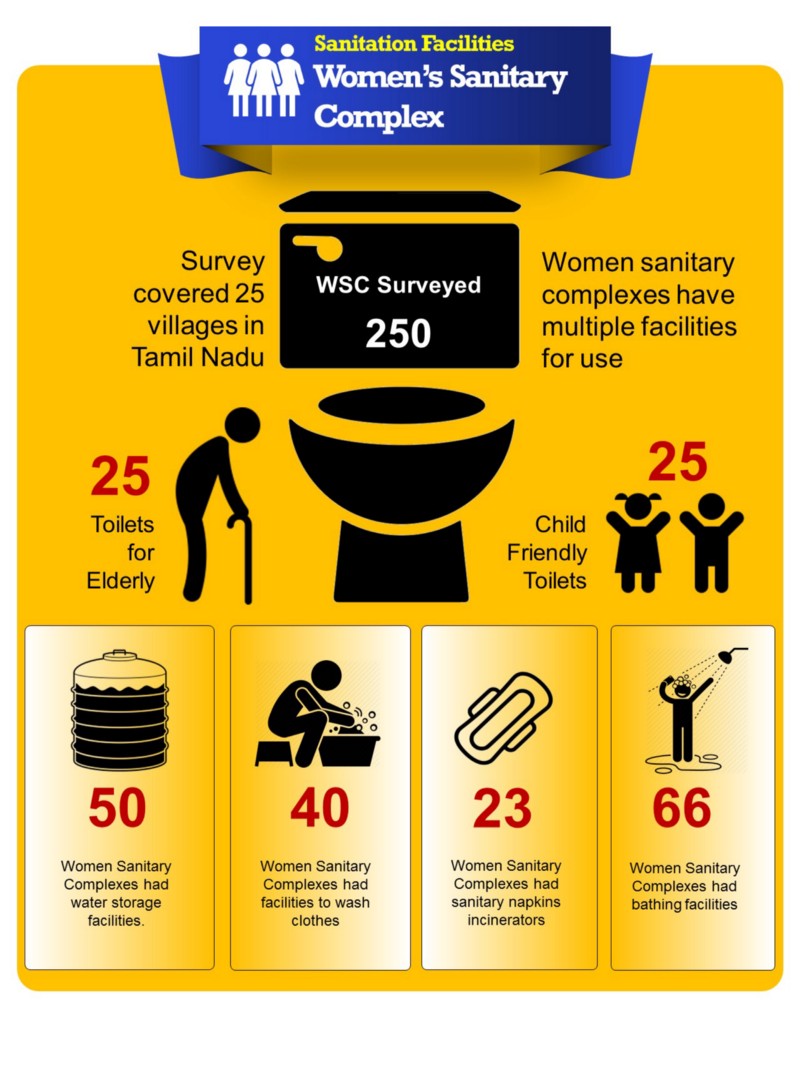
Toilet Tales #1 — The Crusader
Sundari | 60 years | Maintenance staff of the Women’s Sanitary Complex. Dhoosi village, Tamil Nadu
Sixty-year-old Sundari had a story to tell about her village Dhoosi — the name means ‘dust’ in Tamil. She claims the village was once the battlegrounds of ancient kings who raised so much dust during the war, that the name ‘Dhoosi’ stuck!
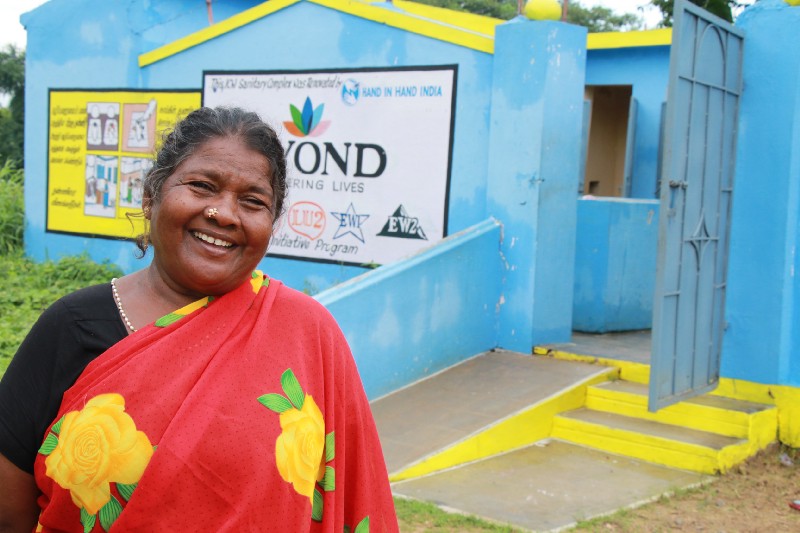
Like the kings of yore, Sundari is a Crusader in her own rights. She is the maintenance staff of Dhoosi village’s Women’s Sanitary Complex (WSC). While her job profile is to keep the WSC clean, she does more than that. Chatting with the toilet users, helping older women use them and sometimes even keeping an eye on children while their mothers use the WSC — Sundari’s is not an easy job.
Women’s Sanitary Complexes are the lifeline of rural Indian women. This is where women in the radius of 2km come to use the toilets, wash clothes and also bathe. The WSC is part of the Government’s initiative to remove Open Defecation from villages. While the Government sets it up, we at HiH India along with partners periodically renovate them, provide for maintenance staff and advocate the use of these communal toilets. Maintenance staff such as Sundari keep in touch with our mobiliser who ensures she receives cleaning supplies regularly.
On a regular day around 70 women and children visit the WSC at Dhoosi, says Sundari. She herself has built a toilet at home and advocates that to the women too. Cleaning toilets that others use is not something everyone can do. Sundari is clear that if this is her karma, she will do it with the idea of doing good for her community.
To some, however, Sundari is not just the cleaning lady, she is the motherly figure who gives them worldly advice and always a nice smile.
Toilet Tales #2 — Washing Away Worries
Komathi | 23 years |Mother of two, User of the Women’s Sanitary Complex. Echoor village, Tamil Nadu
The petite Komathi comes with a bucket of clothes to wash every morning to the Women’s Sanitary Complex. She tells us that her home has a toilet, yet she visits the complex to wash clothes and bathe. We are surprised.
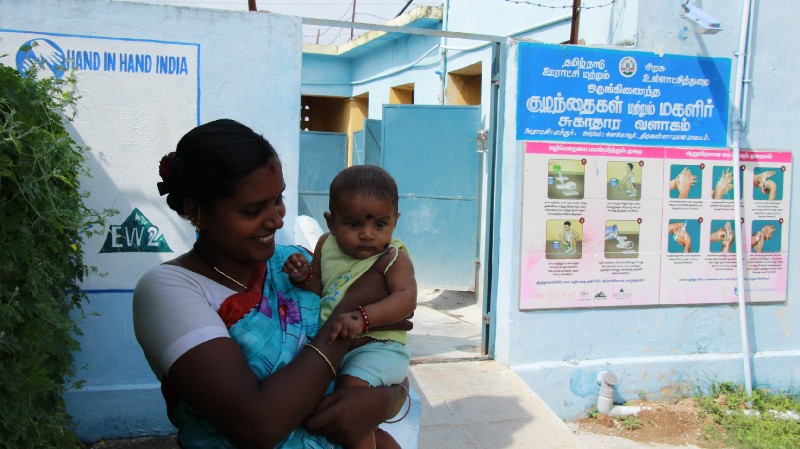
The young mother of two leaves her children at home to use the complex, primarily because the number of people at home are many. The toilet is only one. The complex however has 6 toilets and there is no queue!
We dig deeper, and find the other reason she comes to the WSC. Washing clothes is a chore that Komathi makes easier for herself by chatting with her friends. The light banter within these walls is something she looks forward to everyday.
Lack of water or lack of a toilet were not the only reasons rural women used the Women’s Sanitary Complexes. We had discovered a social aspect that these community toilets provide!
Toilet Tales #3 — The Power of a Postcard
Leone & Monisha| 10 years |Grade 5 Students and proud users of toilets. Melmadhuramangalam, Tamil Nadu
At the Government Primary School in Melmadhuramangalam, Tamil Nadu a bell announces lunch time. The children quickly form a queue, not where lunch is being served, but at the wash area — to wash their hands before eating.
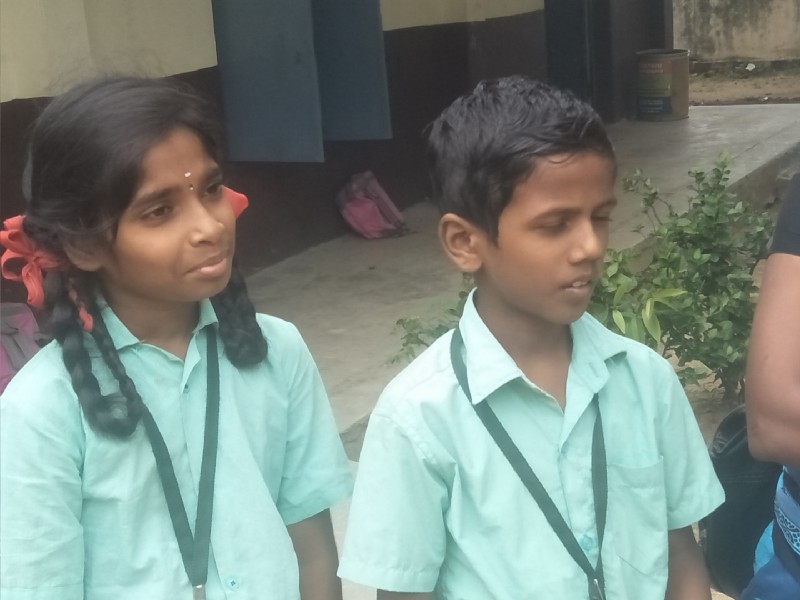
As part of Hand in Hand India’s community sanitation project, this school has been provided with renovated toilets, hand washing platform and taps. Last year, students from grade 4 were taught the importance of hygiene, using toilets and not defecating in the open and much more. This class wrote letters to their parents, telling them that they require a toilet built in their home.
A simple letter from their own child seemed to drive home the need for a toilet, many of the parents decided to build one. The power of children was seen here!
Leone and Monisha, classmates from grade 5 are two of those who wrote this letter. Having to defecate in the open meant a constant fear of snakes and insects for Leone. When it rained, the trips to the field became difficult. The toilet has changed the life of this family. Monisha was plagued by constant stomach pains, attributed to worms. Over the last year however, after she has learnt proper handwashing, Monisha’s stomach pains have disappeared. Her family has just started constructing a toilet!
Overcoming the Toilet Challenge — The ‘Beyond Initiative’
Hand in Hand India works across India in the area of health and sanitation, having transformed 10 villages that are now Open Defecation Free (ODF). While the numbers may be better today, getting here has been a challenge.
Over our 15 year existence, we have reached out to more than 50,000 rural population creating awareness and imparting training, particularly in the water and sanitation area. Facilitating 13962 toilet constructions have helped us create ten Open-Defecation-Free villages.
Rural India is waking up to the need for toilets. In rural and semi-urban India, toilets in the home are linked with not just economic conditions but also mindsets. We found advocacy is the way to go — with our campaigns for toilets in homes, mass awareness programmes in schools, puppet shows and street theatre. Women are sensitised on the problems that arise with open defecation — worms, urinary infections and also anaemia.
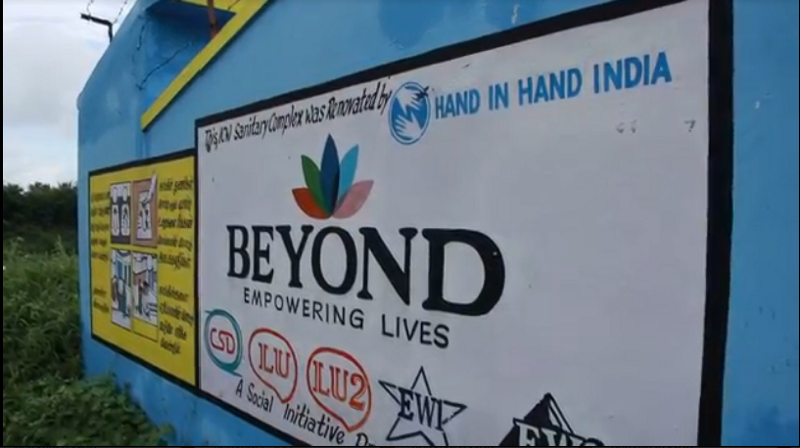
The Beyond Initiative
Our Beyond Initiative gets villages community toilets with the help of Public Private Partnerships. Soundaryapuram, one of the villages in Thiruvannamalai district has been declared an open defecation free village, all with the help of community members. When this village stood up to ask for toilets, they got a Women’s Sanitary Complex that helped the women and children avoid the fields. Today Soundaryapuram has 288 toilets with nearly 85% of the households also having a vermicompost unit that takes care of waste disposal.
Any work in the sanitation sector cannot be complete without access to water. Our work in sanitation — ensuring open defecation free villages, also needed water. Homes needed a water source for their toilets, so also the community toilets. Our WatSan project was the first step to a successful sanitation campaign. Through this project, we gave water access to nearly 270 villages around Tamil Nadu.
Working hand in hand with the district authorities, we have been slowly but steadily bringing about a change in the attitude of rural folk towards health and hygiene. We firmly believe that women and children are the agents of change both in a family and a community.
Hand in Hand India’s Healthcare intervention aims to bring access to healthcare across rural India. Our model works by partnering with district authorities and bridging gaps in the Government’s healthcare network. Through our initiatives of medical camps, sanitation and hygiene management, maternal and child healthcare, we have reached out to more than 20 lakh families across India. Read more about our work here.






